#Inuit culture
Explore tagged Tumblr posts
Text

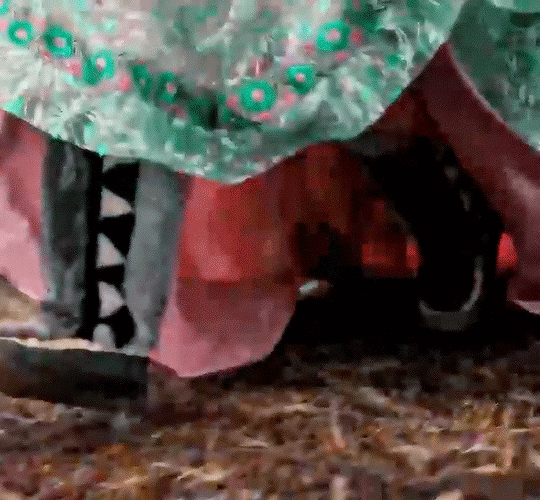





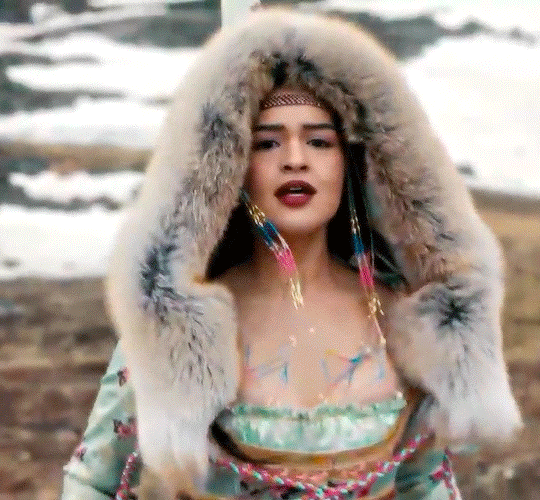

NORTH OF NORTH (2025) costume appreciation: "Inuk Bridgerton" (Series Costume Design by Debra Hanson)
requested by @alinahdee ✨
#bridgerton#north of north#north of north aptn#siaja#anna lambe#inuk#inuit#indigenous#inuk fashion#inuit culture#indigenous fashion#costume design#costumes#costume appreciation#period drama#indigenous cinema#nonedit#tvedit#tvdaily#cinematv#tvgifs#televisiongifs#dailytvedit#dailytvgifs#costumeedit#perioddramaedit#perioddramasource#perioddramagif#this costume is just GORGEOUS!!🤩
1K notes
·
View notes
Text

Muktuk
#digital art#drawing#illustration#artists on tumblr#fanart#fantasy#art#web comic#legendary godzilla#oc#urban Kiju#urban kiju au#Godzilla#Godzilla au#godzilla x kong: the new empire#Shimo#shimo godzilla#godzilla minus one#legendary monsterverse#monsterverse godzilla#shin gojira#shin godzilla#inuit#inuit culture
631 notes
·
View notes
Text

TARNIT
Atqunarnarniqšaitchuuřuq inuuhirmi inuit tarniinnarnik niqautiqa’mata. Hapkuat anŋutikšaqqut niqautikšaqqut, hapkuaraaluit aŋuvaktaqqut tuquhaqpaktaqqut a’nuraaqaqu’luta, tarniqa’mata, uvaptut, tarniŋit tuquvaŋŋi’mata timiŋit tuqugaluaqti’lugit, ta’nai’mallu haturiaqaqtavut akinahuaquŋŋi’lugit uvapti’nik timii’nik aturapta.
—Kunuuti Rasmusan (1879-1933) qiniqtitauqatauhimali’mat Akukitchumiutaq Inuŋmik anaanalik Tainisimik ataataqaqłuni, akiani’ŋaaqtunik hivulliitchuuhimaliqłuni qimukhikkut ukiuqtaqtuup apqutiaguuqtunik.
SOULS
The greatest peril in life lies in the fact that human food consists entirely of souls. All the creatures that we have to kill and eat, all those that we have to strike down and destroy to make clothes for ourselves, have souls, like we have, souls that do not perish with the body, and which must therefore be propitiated lest they should avenge themselves on us for taking away their bodies.
—Knud Rasmussen (1879-1933) was a Danish-Inuit explorer and anthropologist, and the first European to cross the Northwest Passage via dogsled.
(—via ᐊᒡᓗ | Aglu | The Breathing Hole by Colleen Murphy with Siobhan Arnatsiaq-Murphy, Natchiliŋmiutut translation by Janet Tamalik McGrath.)
#knud rasmussen#inuit#inuit culture#quotes#epigraphs#book epigraphs#ᐊᒡᓗ#aglu#the breathing hole#natchiliŋmiutut#inuktitut#inuit religion#religion#animism#my latinization#my posts#language and linguistics#nattilingmiutut
44 notes
·
View notes
Text

Inuit miku sketch
#art#inuit culture#saw a trend on Twitter were people where drawing miku from were their from#so I hoped on the trend and drawn inuit miku :)
84 notes
·
View notes
Text
What Is An Ulu?
Script: ᐅᓗ ; Plural: Uluit, ᐅᓗᐃᑦ
"an ulu is a cultural knife that can be found in many arctic native communities: more specifically the inuit, aleut, yupik, and iñupiat"
What does 'ulu' mean?
'Ulu' is derived from the language Inuktitut, located and based from the Qikiqtaaluk Region in Nunavut, Canada. Ulu means "woman's knife" in Inuktitut.
The Reasoning Behind Such Name...
The name, meaning "woman's knife", obviously shows the reasoning. Uluit are used by Inuit, Iñupiat, Yupik, and Aleut women exclusively due to cultural reasonings. Uluit are passed down generationally, from woman to woman. Grandmother to granddaughter, sometimes auntie to niece.
Uses of the Ulu
The ulu has several different uses, infamous ones include: food prep, skinning, snow trimming.
An ulu is also used for hair cutting and sewing.
Significance, Cultural Value
The ulu is a huge part of Arctic Native culture, especially for women. To be gifted an ulu from an older inuk woman, it's considered an honour.
What do uluit look like?


^ traditional uluit
Stances on Ben owning Uluit
Based off of his unboxing videos where he says he owns several uluit, and even states he uses them as props—I as an Inuk am completely fine with it. As I can safely assume he has been gifted them by other Inuit.
Since he doesn't actually use them, it's not really bad. And with him using the correct plural term (Uluit), I give him kudos—as he must be aware of the cultural significance behind them as it even takes a small Google search to find out what it means.
Thank you for giving me your time, ᑕᕝᕙᐅᕗᓯ! (Tavvauvusi!)
#wttt#wttt fandom#ben brainard#wttsh#welcome to the statehouse#welcome to the table#fmisc#florida man in socal#deadly inuk#inuklessons#inuk#inuit#inuit culture#ulu#uluit#deadly native#rezlife#inuktitut
31 notes
·
View notes
Text
Guys, I found the perfect Sokka creature.
So we all know the dragon Zuko au, where he turns into a dragon, right? And I thought "hey, what if other nations have that too?" So I started my research.

The first creature I thought of was Tangie, because it's perfect for a fanfic. It's a water horse beast, that can appear as either a horse or a handsome man. When someone mounts it in horse form it's pretty safe until Tangie smells water. Then the back becomes adhesive and human can't escape. Tangie takes human to water and eats it.
Zukka fanfic where Zuko wants to put himself in danger (again) with no consideration for his own safety (again) and self sacrifice for others (again), but Sokka in horse form turns on his adhesive trait and literally carries him to safety like "no you stay right here"? Yes please.
BUT!
I thought, why force our western mythology here? So I searched for Inuit creatures, since you know, water tribe is based on Inuit culture. There aren't a lot of them on Wikipedia, so it didn't take long to look through every single one and guys
Guys.
Akhlut.
Do you guys know what an akhlut is? You probably don't, so let me tell you. Akhlut is an orca that becomes a wolf once it steps on land. It also has a merge form.
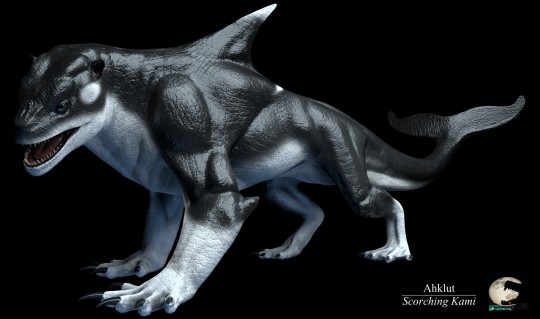
Do you know what looks an awful lot like it was inspired by orca, or at least has orca colors?

THAT'S RIGHT!
Do you guys know what was definitely inspired by wolves?
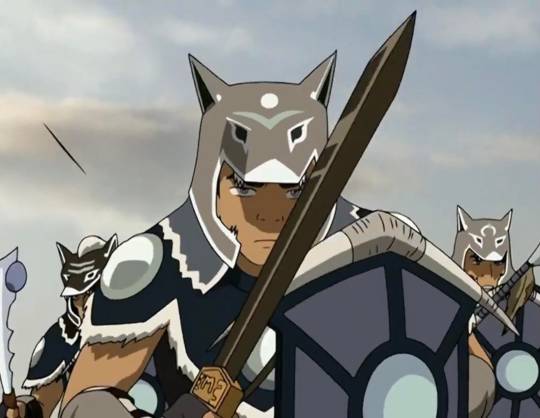
EXACTLY!
He already is an orca wolf! What's more, most of ATLA animals are merged from two animals, so it even fits lore! Tangie is perfect for fanfics, but akhlut is perfect for Sokka.
Why isn't this common in fanfics? Why isn't it popular? Besides, look at this good boy.
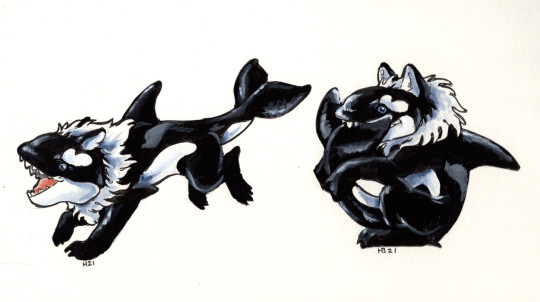
Baby Sokka akhlut.
EDIT: okay so maybe Sokka's war paint doesn't look all that orca-ish, but not having it in front of my eyes I thought it fit so I kept it in the post even after I double checked it. It has the colors. That's enough for me.
Art source:
Tangie from Bailee on Deviantart
https://www.deviantart.com/tag/bailee?page=5
Big Akhlut from Scorching Kami on Deviantart
https://www.deviantart.com/scorchingkami
Baby Akhlut from Hburton on Deviantart
https://www.deviantart.com/hbruton/art/Akhlut-Pups-895973610
#sokka#atla#akhlut#inuit culture#inuit mythology#mythological creature#zukka#imagine he has three forms of human orcan and wolf#and can freely change between those#and also merge them#orca merman sokka?#sokka with his wolf tail out and wagging?#or maybe he only has the orca-wolf form#maybe its his own personal special thing#chosen one style#or maybe its common among southern water tribe warriors#maybe sokka can't change as he would like#the possibilities are endless#akhlut!sokka au#tangie#tangie!sokka au#shapeshofter sokka
76 notes
·
View notes
Text
"The best response to anyone who wants to take seriously Nietzsche's fantasies about savage hunters chopping pieces off each other's bodies for failure to remit are the words of an actual hunter-gatherer — an Inuit from Greenland made famous in the Danish writer Peter Freuchen's Book of the Eskimo. Freuchen tells how one day, after coming home hungry from an unsuccessful walrus-hunting expedition, he found one of the successful hunters dropping off several hundred pounds of meat. He thanked him profusely. The man objected indignantly:
'Up in our country we are human!' said the hunter. 'And since we are human we help each other. We don't like to hear anybody say thanks for that. What I get today you may get tomorrow. Up here we say that by gifts one makes slaves and by whips one makes dogs.'
The last line is something of an anthropological classic, and similar statements about the refusal to calculate credits and debits can be found through the anthropological literature on egalitarian hunting societies. Rather than seeing himself as human because he could make economic calculations, the hunter insisted that being truly human meant refusing to make such calculations, refusing to measure or remember who had given what to whom, for the precise reason that doing so would inevitably create a world where we began 'comparing power with power, measuring, calculating' and reducing each other to slaves or dogs through debt.
It's not that he, like untold millions of similar egalitarian spirits throughout history, was unaware that humans have a propensity to calculate. If he wasn't aware of it, he could not have said what he did. Of course we have a propensity to calculate. We have all sorts of propensities. In any real-life situation, we have propensities that drive us in several different contradictory directions simultaneously. No one is more real than any other. The real question is which we take as the foundation of our humanity, and therefore, make the basis of our civilization. If Nietzsche's analysis of debt is helpful to us, then, it is because it reveals that when we start from the assumption that human thought is essentially a matter of commercial calculation, that buying and selling are the basis of human society — then, yes, once we begin to think about our relationship with the cosmos, we will necessarily conceive of it in terms of debt."
- David Graeber, from Debt: The First 5,000 Years, 2011.
#david graeber#peter freuchen#quote#quotations#egalitarianism#inuit culture#worldview#mutual aid#anthropology#kindness#compassion#nietzche#neoliberalism#debt
117 notes
·
View notes
Text


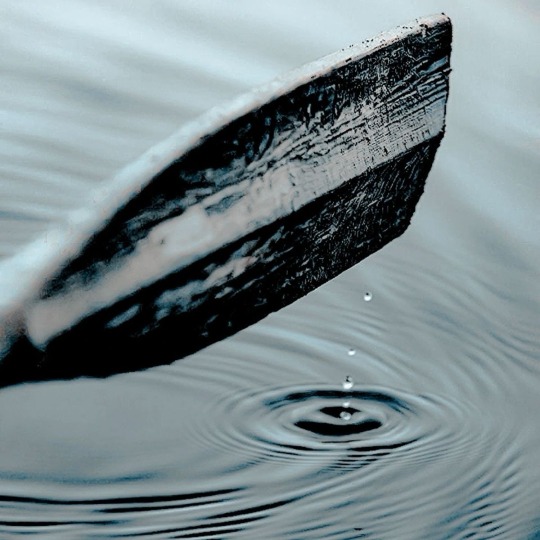






Sokka (ATLA)
#livi’s moodboards#moodboards#moodboard#aesthetic#cartoons#Nickelodeon#blue#silver#gray#water#water tribe#sword#boomerang#hunters#Inuit#Inuit culture#atla#avatar#avatar the last airbender#sokka#atla sokka#holiday#Christmas#Moodboard advent calendar
38 notes
·
View notes
Text
I looove that they put the story of Sedna the Sea Goddess in dead boy detectives smmm! It’s one of my favorite Inuit stories (highly recommend looking into their culture, it’s so beautiful!)
9 notes
·
View notes
Text
My analysis of Greenland from a Norwegian perspective
I read Sermitsiaq's websites roughly monthly without needing translator tools, and have watched Danmark Radio's splendid documentary series Historien om Grønland og Danmark.

From my understanding, Greenland has never truly felt okay with Denmark. Until circa 1940, all trade with other nations was banned (and even then it only became allowed due to Greenland being in the Allies and cut off from Denmark); and at least 6 different approaches for Greenlandic society has been tried out (ranging from enforcing old hunting techniques, to building reasonably good apartment blocks with TVs, then-modern stoves, and everything).
However, and this is a very big however: Greenland's goal is independence. Not to become colonised by a second nation.
Pretty much the only thing left that hampers Greenlandic independence is that their land-based infrastructure is non-existent. There are no proper roads between any towns. A dirt trail between the old Kangerlussuaq airport and the town of Sisimiut was purportedly opened a year or 2 ago, but would be very impractical at best to carry large supplies through.
Greenland probably also needs a strategy for currency; they can't readily change to the Euro. Or at least I don't think they can. They also never really got momentum going with building a proper football stadium for CONCACAF; and they only have 1 proper locally based TV station, 1 newspaper, and AFAIK 1 radio station, partially owing to their not particularly large population (Digital TV is widespread, but a majority of those channels are Danish).
Their amounts of land-based farming is also not much to write home about, so outsiders' eyebrows will be raised even higher than before about whale hunting until they get better access to e.g. grains without import costs.
#greenland#grønland#denmark#danmark#independence#danmarks radio#sermitsiaq#colonialism#inuit#inuit culture#infrastructure#historien om grønland og danmark#documentaries#concacaf
5 notes
·
View notes
Text
Hold Me Like Water
Chapter Sixteen: Aussie In The Snow


Warnings: fluff mostly. non-graphic depiction of seal hunting.
Word Count: 5.7k
Hold Me Like Water Masterlist
Previous Chapter | Next Chapter
April 2025,
Maya made plans months ago to get Kakinitt on her fingers and arms back up in Nunavut and Hugh, well, he wanted to come with. He wanted to see the traditional practice in action and also see her parents in real life rather than just in pictures or hearing about them from her or Sakari.
“I mean, I’m not gonna say no but you will be cold.” Maya said when he expressed his desire to follow her into the Arctic circle. They were in bed and Hugh had his head perched on her stomach while she ran a hand through his hair. “It will be loud, it’ll be overwhelming, my aunties will make fun of you, they’ll wanna know every detail of our relationship.”
Hugh pressed soft kisses to her stomach, tracing the soft outlines of her abs. “I won’t mind it. Not when I have you there to keep me warm.” He nuzzled his nose against the middle of her flesh. The soft hairs there brushed against his skin in the sweetest way possible.
The moment was made even sweeter when Maya laughed, her stomach rumbled slightly under his ministrations because of her laughter. It only made him kiss her torso more, trailing them up and down her sternum.
“Alright,” Maya whispered into the dimly lit room. “But you gotta wear more sunscreen than usual, the sun bounces off the snow and I’m sure my dad’s gonna want to take you out fishing and all that.” She slid her thumb over the apple of his cheek.
Hugh leaned into her hand, turning his head to press a few kisses to her palm. “Only if you put it on for me.” He pressed her hand against his cheek, soaking up her warmth.
“Sure, honey.” Another chuckle rumbled out from her chest.
On the plane, a nervousness that Hugh had never felt before bubbled inside his ribs that made his heart race. The fact that he had never met Maya’s parents hit him once they were in the air. He knew what they were like, to some degree, because of her stories—stories of ice fishing with her father, of learning to braid with her mother, of snowball fights, of the cellar where they froze their meats, of days where the sun would never completely set over the snow, of watching the Northern Lights illuminate the night sky—it all painted a nice picture. He wanted to look outside the frame.
As soon as he exited the plane, he was hit with the cold like a baseball going seventy miles per hour. It stung his cheeks and reddened them within seconds. On the other hand, Maya was breathing in the air like it was a crisp summer’s day.
They had to drive up to Maya's village, seeing as the airport as hours away. It was a scenic drive with snow covering nearly every inch of land and the occasional mountain in the distance. There weren't many paved roads so the car shook slightly as Maya drove through the snow.
As she pulled into the village, Hugh's eyes widened slightly with wonder. It looked almost picturesque. There were houses of all different, vibrant colors dispersed around the snow. There was a small downtown area that exuded charm with signs in English, French, and Inuk script.
When they pulled up to her childhood home, it was similar to the others. Though, this one was slightly bigger and was a cobalt color with some snow tucked into the wooden siding. A plume of smoke was coming out of the chimney, signaling that there was a fire going inside.
Hugh was lost in looking at the house when Maya stepped out of the car. He was pulled back down to Earth once she shut the door. He scrambled to get out and help her with the bags.
“I'm good, y'know?” Maya chuckled as she watched Hugh try to carry more than her. “I have muscles more than just for show.”
He leaned over and pressed a kiss to her cold cheek. “Oh, I know. But my girl is gonna be in so much pain in a few days, I wanna give her the princess treatment.” He smiled slyly.
Maya stared at Hugh for a few moments, shaking her head before she led him to the front door. It had a brown mat that said ‘Welcome!’ in Inuit syllabics. Before she even had the chance to grab her key from her coat, the door swung open to reveal her mother.
Hugh could see the resemblance immediately. Bea had deep amber eyes that matched the one Maya had, her hair was the same deep color of the night however she had greys littered throughout, their skin was a similar shade, but her facial markings were slightly different with dots in certain places and more lines that went down her chin. Her presence, on the other hand, already enveloped him with a warmth he had only experienced with the Imik sisters.
“My beautiful girl!” Bea smiled widely, pulling Maya into a tight hug. She had to pull the taller woman down because of her short stature. They exchanged a few words in Inuktitut.
When Bea smiled, Hugh couldn't help but smile too. She had crows feet and smile lines that indicated a life well-lived.
As her daughter stood at her full height, Bea looked over at Hugh and ushered him inside. “Come in, come in. Go to your room, put your things away.”
Maya chuckled softly, leading him up the stairs to her room. It was more refined than the childhood room Hugh expected but her parents must've done a bit of painting. He did find some pictures of young Maya that he had never seen before while he set their bags and suitcases down.
A picture of little Maya and Sakari in the snow. Maya was already a head taller than her sister and it made him laugh. His eyes roamed over the walls while Maya shouldered off her layers of coats.
One photo in particular caught Hugh’s attention while he slipped off his jacket as well. He'd seen it before. Years ago. Blood was splattered all over Maya, dripping down her face while she was surrounded by the dark expanse of night in the middle of the Arctic. His pants suddenly felt tight.
“That was a fun shoot.” Maya hummed, stepping beside him as she looked at the picture. “Couldn't get the blood off me completely for a week.”
Hugh turned to look at her, narrowing his eyes for a moment. He compared her to the picture, eyes roaming over the slight differences in her appearance over the years. Her cheeks hollowed, losing their baby fat and she had some smile lines that added more charm than she knew what to do with.
He wrapped an arm around her waist, bringing her closer to his side. “Kinda want to see you covered in blood again.” He whispered teasingly before he pressed a kiss to her cheek.
“Some day, I'm sure you will.” Maya nudged his ribcage with her elbow. She took his hand and guided him back downstairs.
As soon as they stepped back down to the ground floor, a black furball nearly toppled Hugh down onto the floor. But no, it wasn't just a furball, it was a huge dog. A wolf. His eyes widened slightly as his hands found the fur of the creature.
“Kila, no! Ammugiaqtuq!” Nick's deep voice followed after the dog, pulling slightly on her collar. Once Kila settled back down on all four legs, Nick offered a hand to Hugh. “Hello, I'm Maya's father. It's nice to meet you.” He smiled kindly.
Hugh offered a smile back to him as he shook the older man's hand. “Nice to meet you too.”
Compared to the rest of his family, Nick had short hair that was almost completely grey with lingering strands of black at the end, however it was still long enough to have a thin braid that ran down the side of his head. His deep brown eyes reminded Hugh of Maya’s other eye, a deep, dark coffee color. They also had a similar stature but Maya was still a couple inches taller.
“This is Kila?” Hugh motioned to the large wolf Nick was keeping on the floor. He brushed a hand into her fur on her head, a look of wonder in his eyes as he saw her stunning sky blue eyes.
“Mmhm, she's really friendly. She loves new people.” Nick nodded. Kila’s tail wagged while her tongue lolled out of her mouth while she looked up at Hugh.
Sakari pulled Kila into her arms, “C'mon, don't fraternize with the white man. He'll take you away.” The dog nearly engulfed her body and whined after her words as if she could understand them.
Maya laughed softly and shook her head at her sister's antics, sliding a hand to the small of Hugh’s back to make sure he was alright.
Hugh's eyebrows furrowed slightly as he heard Sakari's voice. It was different. Only by a bit. Her pronunciations changed. But he smiled anyway.
Bea came from the kitchen with two steaming mugs and offered them to Maya and Hugh. “To warm up.” She smiled lightly and pulled Maya down to brush their noses together.
Hugh admired the interaction as he sipped on the hot chocolate. He nearly moaned at the taste but caught himself. It was rich and coated his tongue and was clearly homemade.
“Thank you so much, Mrs. Imik.” He said sincerely, breathing in the decadent scent.
“Ah, none of that shit. I'm only ten years older than you.” Bea shook her head and waved him off.
Hugh felt himself flush, looking down at his mug. “Right, I apologize. Bea.”
Sometimes he forgot how much closer in age he was to her and Nick rather than to Maya. He'd known Maya for so long that he almost didn't acknowledge the twenty-two year gap.
Nick clapped Hugh on the back, pulling him close with a hand on his shoulder. He clicked his tongue, “Don't apologize. You're practically family already. Maya talks about you all the time.” His words made Hugh smile.
There was a calmness about Nick that he could see echoed in Maya, like a tide brushing against the sand in the morning sun during a crisp Spring day. Hugh never would have guessed he was in the government.
“Papa!” She complained softly, a flush on her face that had nothing to do with the cold.
“All the time?” Hugh teased her, a playful glint in his eyes.
They all settled on the couch, Kila stretched her long body across Sakari and Maya’s lap and looked up at Hugh like she was studying him.
Sakari talked to the large wolf dog. “Get away from him, he's a little bitch and he's gonna steal Maya away.” It was in Inuk so he couldn't understand what she was saying but he did hear Maya's name.
Kila gave a weak bark in response before she nudged her nose against his thigh. Hugh smiled slightly as he scratched behind her ear and earned a soft rumble from her. He always loved dogs but this one was clearly special. Not to mention, huge.
“So, how did you two meet?” Hugh turned his head to look at Bea and Nick who were sitting next to each other.
“She nearly ran me over on her snow bike.” Nick said simply. He had a hand wrapped around Bea’s waist, nestling her against his side. “We were on the way to the same university and I immediately started crushin’ on her.”
As Nick talked, Hugh realized the way Sakari spoke earlier was similar. Her accent changed when she came home. He supposed his accent got thicker when he came back to Australia, he just never noticed.
“I thought he was stupid.” Bea shrugged. “But I have always had a thing for idiots. Gave him a ride on my bike and didn't look back.” Her voice was flat but he could clearly see the love in her eyes as she looked at Nick.
Hugh found himself smiling again, absentmindedly scratching Kila's head as she settled it on his lap and nodded along to their story. It sounded like something so surreal yet realistic at the same time. A game of chance and they both took a gamble.
Nick tilted his head a little. “What about you?” He pointed his chin at him and Maya. “What'd you think of Maya when you first met?”
They've heard Maya's story about meeting Hugh, except for him, multiple times. Sakari served as an eyewitness who gave her own testimonies but Nick wanted to hear his own account of the story, wanted to hear what was going through his head at the time.
Hugh turned his head to look at Maya who was still sipping a bit at her hot chocolate. It was lukewarm by now but she had a few sips left and didn't want any to go to waste. He took a moment to admire her. She was just as beautiful as his first glimpse of her, perhaps even more, and she would get better with time, he was sure of it.
“I thought she looked stunning, that she would become a star and she has. I thought that she had so much potential. I wanted to be her friend to help her grow and…” Hugh drew in a deep breath as he took her hand and squeezed it. “I've done that and more. She's impacted my life than I could have ever imagined.”
Maya nuzzled into his neck, brushing her nose against the juncture of his jaw and his throat. He leaned into her, rubbing his cheek against her temple as she draped an arm around his shoulder. Her hair was soft against his skin as it always had been and always will be.
“Well, my sister deserves to be a star.” Sakari cut in, pushing her face into Maya's neck.
Hugh chuckled and brushed a few hairs away from Sakari's forehead. “I completely agree.”
The touch was fleeting, almost offhanded and casual. Not to Nick and Bea. While Sakari was akin to a small dog who liked to bite at ankles, she loved just as deeply as Maya. A touch like the one Hugh gave would not be accepted if it was just anyone. It was momentous when she let a person even brush a hand against her hair.
It was clear Hugh was already family to their girls. Nick and Bea couldn't wait to properly get to know him.
The following day was spent in the snow. As promised, Maya rubbed sunscreen onto Hugh's face and even helped to bundle him up.
Sakari was trying to pull Maya down into a pile of snow but she didn't even budge. “I thought you'd learn.” The older sister commented.
“I thought you'd know that I never learned.” The younger sister said while still attached to her back.
Instead of responding, Maya pulled Sakari from her back and threw her into a pile of fluffy snow to break her fall. Sakari groaned as she lay there as if she were shot.
Hugh laughed, leaning into Maya's side as he lifted a hand to cover his mouth. It was a mannerism he picked up from her. Seeing the sisters in their natural environment and how they usually interacted with each other was entertaining and eye-opening all at once.
Soon, playing in the snow turned into an all out fight. Sakari even dumped a large ball of snow down the back of his hood. “I told you I'd throw snow down your coat!” She exclaimed after he pushed her face in the ground.
“Well, then you should know that your actions have consequences!” Hugh teased, letting her go to fall into a heap in the snow yet again.
Maya sat next to Sakari while Hugh sat on her other side. They all caught their breath, coats covered in a light layer of snow from different hits that disintegrated against their bodies. The girls had flakes of white clinging to their long hair and lashes.
“It's a little bittersweet… playing in the snow.” Hugh mused softly as he looked up at the sky. Snowflakes were dancing slowly in the sky. “It didn't snow much in Australia when I was a kid, if at all. I don't have childhood memories of waking up during Christmas and looking out my window with wonder at the snow-covered hills.”
Maya arched her neck to look at Hugh. “But you'll remember them better now. It's okay to feel like you missed out but you're experiencing something similar now.” She gave him a soft smile.
“We don't celebrate Christmas anyway so fuck that.” Sakari chuckled. It made Hugh and Maya laugh too. “One year, when we were younger, Maya suplexed me into a pile of snow. Like I weighed fuckin’ nothin’.” She nudged Maya’s shoulder.
She rolled her eyes in return. “Because you do. Are you sure you're eating?” She teased.
“Now that I'm home, I definitely will. Mama will force feed me.” Sakari laughed.
Hugh let out a laugh as well. He could imagine it well—Maya, younger but not much weaker, throwing Sakari over her shoulder like she was as light as a feather or a pebble. It was a cute image.
Soon, Nick came out and packed some gear onto a snowmobile while Kila ran outside to trample Sakari to the ground. “Alright, nutaqqat, I'm goin’ huntin’ for tomorrow. Weather should be good.” He called out to them. “Hugh, would you wanna come with?”
They got up from the snow. Well, Sakari struggled to get Kila off her as she tried to get up.
Hugh felt a flicker of nervousness go down his spine at being alone with Nick. “Sure. I'm not sure how much help I'll be.” He said, a nervous laugh escaping him.
“I can come with.” Maya offered.
“Nonsense, you need to keep your energy for tomorrow.” Nick shook his head and then pulled Hugh close with a gloved hand on his shoulder. “Plus, I want some one-on-one time with my future son-in-law.”
Maya huffed softly, a plume of warm air curled around her face. “Papa!” She scolded.
Hugh flushed again but not from nervousness this time. Of course, he knew Maya was it for him. He wanted to spend the rest of his life with her but the question of marriage never really hit him yet and they never talked about it. However, the idea was very appealing. To see her in a dress that would seal their love once and for all…
“Don't worry, I'll be fine.” He cupped Maya’s cheek and pulled her close, pressing a kiss to her lips.
“Alright.” Maya sighed. Her breath warmed his face for just a moment. She pulled back to look at her father again. “Be careful with him, he's a fragile white man.” There was a playful lilt to her voice but there was a seriousness in her eyes.
Nick waved her off. “He said not to worry. So don't.” He reassured, rolling his eyes as he held Hugh close.
Maya's gaze shifted between the two men. Hugh was clearly nervous but determined not to let his nerves get the best of him and to prove himself in whatever way her father needed him to.
“If you scare him off, I'm blaming you.” Maya glared at her father as she spoke in Inuktitut.
“If I scare him off, you shouldn't have been friends with him to begin with.” Nick responded.
Hugh watched the exchange, wondering what they were talking about. It had to be about him to some respect but he couldn't understand what exactly it was. Perhaps he should ask Maya to teach him how to speak Inuktitut.
Soon, he and Nick were on the snowmobile, riding into the white expanse until there was nothing around for miles besides more snow and rocky hills. The cold was starting to bite Hugh’s cheeks as they slowed to a stop.
Nick got off the vehicle and looked around, drawing in a deep breath before he inhaled it. “Sometimes it's nice to just enjoy the nature around you. Fills the spirit.” He looked back at Hugh. “There's no one around for miles, y'know. No one to hear you scream.” There was silence. A flicker of dread settled in Hugh's gut.
“Are you… going to kill me?” Hugh tried to let out a laugh, to see if Nick was joking, but it came out more tense than he intended.
Nick gave a loud laugh in return, “No! No.” Hugh relaxed. “But my wife might.” Before Hugh could even think of a response, Nick breathed. “Oh, I see a seal!” He moved to grab his sniper.
Hugh tried to spot the same seal for a few seconds but all he could see was white. As Nick lined up the shot, that was when he saw it. A grey blob miles away broke up their pale surroundings. “Shouldn’t we—”
“Shh, quiet, irniq!” Nick looked through the scope, taking a few deep breaths as his finger curled around the trigger. Then he squeezed and a single shot broke up the silence. He kept looking through the scope to make sure the seal was in fact dead. “Got it.”
“Good shot.” Hugh commented.
Nick chuckled, “Ah, well, I’ve been doing this since I was a kid. Not much taller than a dingo.” He nudged the other man as he fastened the sniper back onto the snowmobile. The comparison made Hugh chuckle too.
Seeing the seal up close was a sobering experience. He hadn’t hunted anything before. As a trickle of blood stained the snow, he helped Nick secure the seal onto the sled attached to their vehicle.
“You cold?” Nick asked as he rummaged for something in his pack.
Hugh nodded. “Very.” His face felt a little numb compared to the rest of his body. Maya gave him one of her homemade parkas that locked in warmth.
“The seal blood will keep you warm.” Nick drained a bit of blood into a mug and offered it to him.
Hugh looked down at the mug, a little skeptical. He grabbed it. “You gonna have some?”
“I’m not cold.”
“Right.” He gazed into the crimson liquid.
He trusted Maya so, by proxy, he trusted that her father would never steer him wrong. He gulped it down. The metallic taste splashed against his tongue as he swallowed. Sure enough, a warmth bloomed in his chest and spread to his face.
When they came home, it was evening, and Hugh helped Nick carry the seal down into the cellar.
Back in the comfort of the house, Hugh let out a breath when he saw Maya. He took off his beanie and coat before he slid up to her as she lounged on the couch and buried his face into her shoulder. She was so warm.
“What'd you do today?” He mumbled, nuzzling against the exposed skin of her neck.
Maya wrapped her arms around him, pulling him closer to extend her heat to him. “Been drinking tea, mostly. Mama said it should help with the pain tomorrow. Other than that,” She glanced at Kila. “Been playing with her.” The wolf gave a soft woof in return.
Hugh stared at Kila, studying her. In the last day, he'd seen her nearly always respond to someone whenever they talked to her or about her. “Can she understand us?” He asked.
“Oh, yeah! Kila may not know exactly what you're saying, but she knows what you mean.” Maya explained while Kila looked at him as if she were annoyed.
As they settled in for another night, Hugh couldn't sleep. Kila was howling downstairs much like her ancestors would. Maya was sound asleep, slumped like he assumed the rest of the house was since they were used to it.
Hugh bit the inside of his cheek as he peeled himself from Maya's grasp and carefully walked out of the room. Once downstairs, he saw Kila's eyes refract in the dark and it nearly gave him a heart attack before he turned on the kitchen light.
“Hey, girl,” He said in a soft tone as he walked up to the wolfdog, brushing a hand into her dark fur. He didn't even have to lean down. Kila gave a light yip and nuzzled against his hand, tail whipping against the cupboards but she didn't care. “Can you quiet down, please?”
She let out a half-hearted growl in return, annoyed. It was in her nature and her humans didn't mind it. She nudged her nose against his wrist.
Hugh sighed and then sat down on the floor, leaning his back against the cupboards. “I know you can't fight it but… I need my energy if I'm gonna be by Maya’s side tomorrow.” Kila sat next to him, her icy eyes curious. He began to absentmindedly pet her fur. “She's been there for me for so long, I can only hope to give her a fraction of the support she gave me.”
Kila licked the side of his face, eliciting a giggle from him. She looked so big and scary on the outside, with large canines, dark fur, and a huge body and he had no doubt she could be scary if she wanted, but she acted like an oversized puppy. A wise, knowing oversized puppy.
“I hope you know I would do anything for her.” Hugh whispered, scratching behind Kila's ear. “I would never dream of hurting her. I hope that it comes across in my actions.” She nudged her nose against his cheek, offering a few soft woofs.
Back in bed, he slept soundly while Kila curled up at the foot of the bed. Well, she tried anyway. Her body was too big to fit completely.
Since someone getting their kakiniit was a momentous occasion, but even more so for Maya since she was a high ranking official's daughter, there was a ceremony held at the community center with nearly everyone from the village who brought something to eat or contributed somehow.
As the closest thing to a family member, Hugh was in the room with the rest of Maya’s family while she got her tattoos on her fingers and forearm. She sat well throughout the process. He did not.
It was a struggle not to hold and comfort and soothe her to the point Sakari had to wrap her arms around him to trap him. The back of her hand made Maya hiss and he had to fight the urge to pull her away from the elder currently tattooing her. But he couldn't deny he also found himself intrigued as the markings were embedded in Maya’s skin, triangular and rectangular shapes that somehow elongated her limbs.
The markings were sanitized and the elder lit up a bit of smudge to waft over Maya. She breathed in the smoke.
Hugh was by her side as soon as it was done, cupping her face. “Are you alright, my love?” His eyes danced across her features for any sign of pain.
“Mildly uncomfortable but I'm fine.” Maya had a content expression on her face. “You were worried.”
“I always worry.” Hugh whispered, pressing a kiss to her forehead. He cupped the back of her head and let his lips linger, closing his eyes.
He knew Maya was a strong woman, emotionally and physically, but she didn’t have to carry her burdens by herself anymore. Her burdens were now theirs.
They moved to the main communal area. It was a cacophony of sounds Hugh was not prepared for—music blaring through speakers, the jingling of jewelry as people danced, sharp, loud laughs, and enthusiastic talking. The sights made him smile. Women and men wore beaded earrings and necklaces and adorned homemade furs. Sakari and her parents went to mingle with a few people while Hugh and Maya sat at a table.
“What do you want to eat?” Hugh wanted to make sure Maya had enough energy after the adrenaline rush of getting a tattoo. He knew the process was different but he assumed the aftercare was essentially the same.
Maya peered over at the food table, taking in all the different options. “Oh, you have to get the narwhal,” There was an excited glint in her eyes. “And the bannock, and… I want to eat something warm, so some of the stew would be good.”
“Whatever you want, love.” Hugh pressed a kiss to her cheek as he stood and walked over to the other table.
As he grabbed a plate, Nick came over with another man by his side. “Hugh! Taking care of my daughter, are you?”
“Trying to.” Hugh nodded with a light smile as he gathered the things Maya wanted onto the plate.
“This is my younger brother, Henry.” Nick motioned to the other man.
Henry was visibly quite a few years younger than Nick. If Hugh had to guess, he would be ten years younger or so. His age. Perhaps a little younger. Henry’s hair was still as black as empty space and had much less wrinkles than his older brother. He exuded charm that was hard to miss.
“Nice to meet you, man.” The younger brother smiled brightly, sincerely as he stuck his hand out.
Hugh gave him a nod as he shook his hand firmly. “Likewise. It’s always nice meeting more of Maya’s family.”
“Well, you’ve met Sakari and survived somehow, we’re all a lot more calm than that.” Henry joked, shoving his hands into his brown leather jacket.
It was becoming clearer and clearer that Sakari was the baby of the village. The one they all made fun of but it was all out of love. The thought made him smile.
“I’ve noticed. You’ve all been very welcoming.” Hugh said sincerely. He knew he was an outsider and, in some ways, he had no business being there but they seemed to actually enjoy his presence which he did not take for granted.
Henry shifted his gaze from Hugh to Nick and back again. “I heard you went seal hunting yesterday. How’d that go?”
“Well, I didn’t do any of the shooting,” Hugh chuckled, shaking his head. “If I did, I’m afraid we would have come home with nothing.”
“Ah, you were a good help with hauling the thing.” Nick waved him off.
“Glad my biceps could be of service.”
“Though, I did think you were gonna blend in with the snow.”
Hugh could see where Sakari got her humor from.
After a couple more minutes of talking, Hugh made his way back to Maya who was in the middle of talking to Arlo. He caught a bit of their conversation as he put the plate down. One would think they were talking about upcoming roles or red carpet appearances given how serious they looked.
“—your hair looks fine, unless you wanna grow it out more to give a more androgynous look.” Maya motioned slightly to Arlo’s face as Hugh pressed a kiss to her temple, getting her attention. “Hey, honey.”
“Got everything you wanted.” He smiled.
Arlo sighed, shaking their head. “Alright, just ignore me.”
Maya rolled her eyes and went to grab a strip of the narwhal but Hugh, gently, swatted her hand away. “Let me. You’re still healing.” He picked up the strip instead.
“My palms are fine.” She argued, eyebrows furrowing.
“Don’t care.” He stared at her as he held up the piece to her mouth. Maya pursed her lips before she opened them. “That’s better.” He placed the strip inside her mouth.
They fell into a rhythm, Hugh would eat one piece and then give a bite to her. Maya had to resist the urge to touch him. Even though her palms weren’t tattooed, he’d probably freak out anyway but she’d rather not ruin the moment.
Throughout the gathering, Hugh was introduced to more and more of Maya’s family and townspeople as they went up to her table to talk to her and, occasionally, offer her a gift. He heard a mixture of Inuktitut and English spoken and found himself more intrigued than ever to learn their language.
Every so often, an auntie would ask when they were going to get married. It was telling just how an outsider could see how close they were though they haven’t been together for even a year. There was a familiarity between them not even a couple of ten years could have. The comfort of genuinely knowing one’s partner before they ever started on the romance. The knowledge of all those little things that their partner loved and would make their day just a little better if they had it.
As some people began to filter out, Nick came up to them and had a small rectangular box in his hands. “Since you’re, hopefully, gonna be coming up here more often… I made you something.” He gave the box to Hugh.
He was surprised. He wasn’t expecting any gifts. He was more of a giver than a receiver when it came to that kind of thing. He was especially surprised knowing how much it meant to give gifts in the Inuit culture.
Maya smiled at Hugh, happiness rolled off her in waves. “I’m not sure what to say…” He looked from her to Nick.
“Don’t say anything. Open it.” Nick nodded at the box.
Hugh drew in a breath as he lifted the lid. Nestled inside was a pair of snow goggles that closely resembled a pair he recalled Maya wearing once or twice with intricate carvings on the edges. He lifted them to his eyes, just seeing how it fit. Surprisingly well. He wondered how Nick managed to get his measurements.
He set the goggles back in their box and stood to hug Nick. “Thank you. For opening up your home to me and offering the best hospitality.”
Nick patted Hugh’s back. “You’re Maya’s person. If she loves you, then that’s enough reason for us.”
Hugh then turned to Maya and cupped her face. He stared into those eyes that mesmerized him every time. “And thank you.” He whispered tenderly.
“For what?” Maya’s lips quivered into a lop-sided grin as she stared up at Hugh.
“For being the thing I didn’t expect.”
------
ending a/n:
ammugiaqtug = down
nutaqqat = children
irniq = son
#oc#transgender#hugh jackman wolverine#logan howlett#logan howlett xmen#queer#logan wolverine#native american oc#hugh jackman#logan howlett x oc#hugh jackman fanfic#hugh jackman x reader#hugh jackman fiction#real person fiction#rpf#domestic fluff#fluff#family dynamics#family and friends#inuit#inuit oc#inuit culture#bisexuality#bisexual#best friends to lovers#friends to lovers#hugh jackman x oc
6 notes
·
View notes
Text
Lady Penelope Is Go!

After Fab-1 breaks down outside of a barren Inuit wilderness, Lady Penelope, Parker and I set off on an epic adventure to get back to the mansion. Travelling by foot, we encounter the beauty and wonder of the Inuit culture and the natural world around us as we try to find our way back home.
#Thunderbirds#Lady Penelope & Parker#Inuit Culture#Inuit Wilderness#Snow#Spirits#Native America#Inuit#Story#Idea
5 notes
·
View notes
Text
youtube
This is so nostalgic for me
2 notes
·
View notes
Text
Inui pink

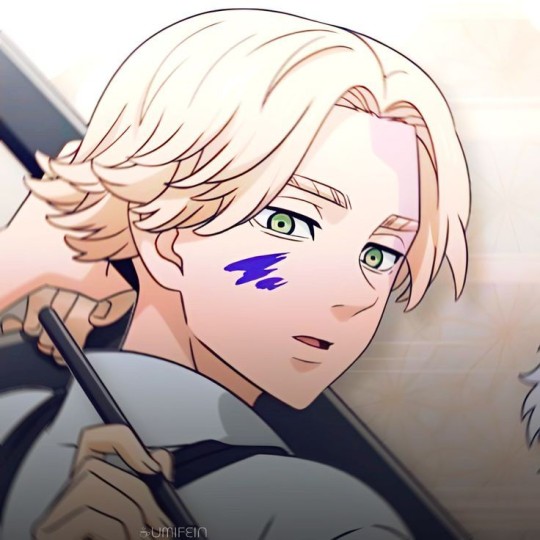


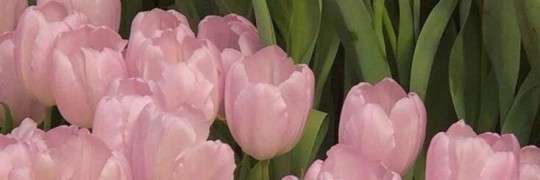




#art#headers#dividers#dividrs#fypツ#fyppage#colorido#anime icons#foryou#gif#pink obsessed#pink#inui x reader#inuit culture#inuit mythology#tokyo revengers inui#inui sajuna
35 notes
·
View notes
Text

Map showing languages and dialects of the Eskaleut language family in North America and Russia.
4 notes
·
View notes
Text

Sketched two ocs and Azula tonight :3 so basically this will be part of a fic I'm writing called Tales of the Kazan, which would mostly be Azula-centric but also focusing on a lot of OCs that show how the Fire Nation and Water Tribes reconcile, as well as the population of dragons rehabilitating, energy bending and benders having the ability to bend more than one element without being the Avatar... and many more concepts I wanna fit it omg but lmk what u think if Ur interested ~
On the left is Kasumi Attagutaluk and she's meant to be a waterbender from the Southern Water Tribe who has a Fire Nation father. Obviously she's similar in appearance to Katara, I decided this bc she is probably like a close relative of Katara's, maybe a first or second cousin or something. I wanted to give her kakiniit which are traditional Inuit tattoos for women, bc I was inspired by how a lot of ppl on here draw them on art involving Katara.
The guy in the middles name is Jin Homura of Kagemusha. He's a bastard from one of the Fire Nation noble families who was orphaned, and found his way to the Serpent Isle. That's basically my version of the Fire Sage temple in LOK where all these characters meet and learn the art of multiple bending styles at once.
Azula's family name is Kazan in this world, which is still the royal family of the Fire Nation, but she gives up her royal title of crown Princess to follow in the footsteps of the Fire Sages and the original firebenders...
#original character#original character art#avatar the last airbender#azula atla#inuk inspired#inuit#inuit culture#inuk culture#kakiniit#fanfic#headcanon#lmk what u think
2 notes
·
View notes